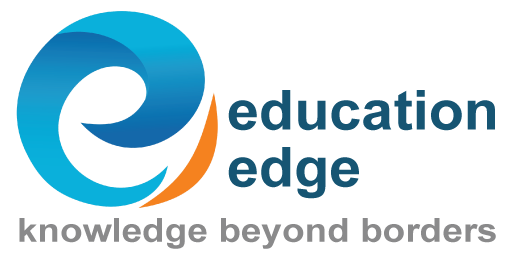Office Read 2 – Program Life Cycle Management
Disclaimer – This artifact is a short summary of respective content that will be covered in class. The summary is a great tool to review content however by no means replaces the SPM V4. Standard for Program Management remains the authoritative source of preparation for the PMP Exam
Goal of this domain: IMP – Program Life Cycle Management is the performance domain that manages program activities required to facilitate effective program definition, program delivery, and program closure.
Weightage on the PgMP Exam: 44% (75 Questions)
This section includes:
7.1 The Program Life Cycle
7.2 Program Activities and Integration Management
What is the purpose of Program Life Cycle Management?
Programs, by nature, involve a certain level of uncertainty, change, complexity, and interdependency among the various components, and therefore, it is useful to establish a common and consistent set of processes that can be applied across phases. These discrete phases, which may sometimes overlap, constitute the program life cycle. Program Life Cycle Management spans the duration of the program, during which it contributes to and integrates with the other program domains as well as the supporting program activities.
7.1 THE PROGRAM LIFE CYCLE
Programs often span long durations—multiple years and, in some cases, decades. Regardless of duration, all programs follow a similar trajectory.
To successfully deliver benefits to an organization, programs are implemented using three major phases, which include:
1. Program Definition Phase. This phase consists of program activities conducted to authorize the program and develop the program roadmap required to achieve the expected results. As part of program definition, the program business case and program charter are formulated. Once approved, the program management plan is prepared.
Question: What phase in Program Life Cycle, the program business case and program charter are formulated?
Answer: Program Definition Phase
Question: What happens once the program business case and program charter have been approved?
Answer: The program Management Plan is prepared
2. Program Delivery Phase. Program delivery comprises the program activities performed to produce the intended results of each component in accordance with the program management plan. Throughout this phase, individual components are initiated, planned, executed, transitioned, and closed, while benefits are delivered, transitioned, and sustained.
Question: In what phase, individual components are initiated, planned, executed, transitioned, and closed?
Answer: Program Delivery Phase
3. Program Closure Phase. This phase includes the program activities necessary to transition the program benefits to the sustaining organization and formally close the program in a controlled manner. During program closure, the program is transitioned and closed or terminated early, or work is transitioned to another program.
Question: When is the program formally closed?
Answer: Program Closure Phase
Question: When the program is pre-maturely terminated, what should happen?
Answer: Irrespective of the phase of the program, in the instance the program must be closed, Program Closure procedures should be initiated.
7.1.2 PROGRAM DEFINITION PHASE
1. The program definition phase includes program activities conducted to authorize the program and develop the program roadmap required to achieve the expected results;
2. The primary purpose of the program definition phase is to progressively elaborate the goals and objectives to be addressed by the program, define the expected program outcomes and benefits, and seek approval for the program.
3. Program definition generally falls into two distinct but overlapping subphases: 1. Program Formulation and 2. Program Planning.
7.1.2.1 PROGRAM FORMULATION
Question: When is the program Sponsor formally assigned?
Answer: Program Formulation subphase of the Program Definition Phase
Question: Who Appoints the Program Manager?
Answer: Sponsor or the Sponsoring organization
Question: What is business case created
Answer: Program Formulation.
Question: What does the business case contain?
Answer: Overall expected benefits
IMP: Question: When is the program manager appointed?
Answer: The assignment of the program manager and the definition of his or her roles, responsibilities, and organizational interfaces should be performed as early as possible. This will help this individual effectively guides the program formulation activity and facilitates the development of the required outputs
Imp: The sponsor’s key responsibilities include securing financing for the program and selecting the program manager who is responsible for conducting and managing the program.. To demonstrate how the program will deliver the desired organizational benefits, the sponsor, sponsoring organization, and the program manager work closely together to:
· Initiate studies and estimates of scope, resources, and cost;
· Develop an initial risk assessment; and
· Develop a program charter and roadmap.
If the business case was developed by the Portfolio Management Function, during Program Formulation is it revised and updated.
Question: What marks authorization of the program?
Answer: Program Charter
Imp Exam Concept: Program Charter provides the program manager with the authority to apply organizational resources to program activities, and connects the program to the organization’s ongoing work and strategic priorities.
If the program is not authorized, this information should be recorded and captured in a lesson learned repository.
Review SPM thoroughly to understand the contents of the program charter.
7.1.2.2 PROGRAM PLANNING
Primary purpose of program planning is conceptually the same as project planning to establish the program management plan.
Question:When can Program planning commence?
Answer: Upon formal approval of the program charter by the program steering committee.
Question: When is Governance structure is established and the initial program organization is defined?
Answer: Program Planning
Question: When is the initial team is assembled to develop the program management plan?
Answer: While program planning. This initial team creates the program management working closely with the program manager.
Just like in project management, the program management plan is the document that integrates the program’s subsidiary plans and establishes the management controls and overall plan for integrating and managing the program’s individual components.
Question: What is the purpose of program management plan?
Answer: Its main purpose is to ensure the program is continually aligned with the strategic priorities of the organization in order to deliver the expected benefits.
Question: What is the critical input to the program management plan?
Answer: The program management plan is developed based on the organization’s strategic plan, business case, program charter, roadmap, and any other outputs from program formulation.
The following plans are integrated into the program management plan:
1. Three critical plans from the Program Performance Domains
· Benefits management plan
· Stakeholder engagement plan
· Governance plan
2. Roadmap developed during Program Strategy Alignment and updated through out.
3. Apart from the above 3 Plans and Roadmap, the program management plan also contains the following 10 Subsidiary plans:
· Change management plan
· Scope management plan
· Schedule management plan
· Financial management plan
· Quality management plan
· Resource management plan
· Communications management plan
· Information management plan
· Resource management plan
· Procurement management plan
Important Concept:
Question:What happens when the Program Management Plan has been established?
Answer: The program delivery phase can begin (just like Execution in project management).
Question: Who approves the program Management Plan?
Answer: Program Governance Board or the Steering Committee
7.1.3 PROGRAM DELIVERY PHASE
This phase included ACTIVITIES (Program Activities discussed in Chapter 8) required to deliver benefits or intended results of each component in accordance with the Program Management Plan.
This phase is iterative in nature and as components deliver benefits, these benefits are integrated into overall program benefits.
Component or project plans are created first at component or project level then then integrated into the program level plan.
There are 3 phases in Program Delivery phase:
1. Component authorization and planning,
2. Component oversight and integration, and
3. Component transition and closure.
Question: When does Program delivery end?
Answer: When program governance determines that the specific criteria for this phase have been satisfied or a decision is made to terminate the program.
7.1.3.1 COMPONENT AUTHORIZATION AND PLANNING
Component authorization involves the initiation of components based on the organization’s specified criteria and individual business cases developed for each component.
Question: Where is the criteria for initiation of a component listed?
These criteria are generally included in the program governance plan.
Question: When is component planning done?
Answer: Component planning is performed throughout the duration of the program delivery phase
Question: What one important aspect to keep in kind while doing component planning?
Answer: Components must satisfy the program’s goals and benefits.
7.1.3.2 COMPONENT OVERSIGHT AND INTEGRATION
In the context of a program, some components may produce benefits as individual components, while other components are integrated with others before the associated benefits may be realized. Each component team executes its associated plans and program integrative work. Throughout this activity, components provide status and other information to the program manager and to their associated components so their efforts may be integrated into and coordinated with the overall program activities.
Question: What do Program Manager do integrate the outcome, results or benefits of multiple components.?
Answer: Program manager may initiate a new component to consolidate the integration efforts
After the program components have produced deliverables and coordinated the successful delivery of their products, services, or results, these components are typically scheduled for closure or transition to operations or ongoing work.
Question: Where is the criteria for Component transition listed?
Answer: The criteria for performing the transition activities and the organizational expectations are documented in the governance plan.
IMP: Question:What happens prior to the end of the Program Delivery phase?
Answer: 1. All component areas are reviewed to verify that the benefits were delivered and to transition any remaining projects and sustaining activities.
2. The final status is reviewed with the program sponsor and program steering committee before the authorizing formal program closure.
7.1.4 PROGRAM CLOSURE PHASE
Question: What is the objective of Program Closure Phase?
Answer: The program closure phase includes program activities necessary to transition program benefits to the sustaining organization and formally close the program in a controlled manner.
During program transition, the program steering committee is consulted to determine whether: (a) the program has met all of the desired benefits and that all transition work has been performed within the component transition, or (b)there is another program or sustaining activity that will oversee the ongoing benefits for which this program was chartered.
Question: When does the program manager receives approval from the sponsoring organization to formally close the program.
Answer: Once the transitioning activities are completed
7.2 PROGRAM ACTIVITIES AND INTEGRATION MANAGEMENT
Program activities and integration management are more cyclical and iterative in nature as adjustments may be required based on the actual outcomes and benefits produced to realign the program with the strategic priorities.
7.2.1 PROGRAM ACTIVITIES OVERVIEW
All work performed in a program for the purpose of overall program management is collectively known as program activities.
Typically, program activities are interdependent and complementary since the deliverables produced from one particular activity may be necessary to perform another activity.
Project and Program Activities: The names and descriptions of these activities may appear to be similar to those of project activities or processes; however, their content, scope, and complexity are different.
7.2.2 PROGRAM INTEGRATION MANAGEMENT
Program integration management is the core activity that occurs across the entire program life cycle. It includes the activities needed to identify, define, combine, unify, and coordinate multiple components into the program. Throughout the program integration activities, there are numerous interactions with other program performance domains. This section focuses on the following activities and when they are performed throughout the program life cycle phases:
· Program infrastructure development
· Program delivery management
· Program performance monitoring and controlling
· Benefits sustainment and program transition
· Program closeout
7.2.2.1 PROGRAM INFRASTRUCTURE DEVELOPMENT
Program infrastructure development is performed to investigate, assess, and plan the support structure that will assist the program in achieving its goals.
Question: When does Program infrastructure development performed?
Answer: This activity is initiated in the program definition phase and may be repeated again at any time during the program life cycle in order to update or modify the infrastructure.
Infrastructure Development (2 Folds) – Management and technical resources + program-specific tools, facilities, and finances used to manage the program.
Question: When does the program management core team is designated as part of establishing the program infrastructure.
Answer: During Program infrastructure development
PMO is a core aspect of Program infrastructure development.
Question: How does PMP supports the management and coordination of the program and component work?
Answer: The PMO establishes consistent policy, standards, and training for programs in the organization.
Program management information system (PMIS) is another key aspect of Program infrastructure development . A PMIS consists of tools used to collect, integrate, and communicate information critical to the effective management of one or more organizational programs.
Important Concept:Review this section in SPM 4 thoroughly to understand what dos PMIS entail.
7.2.2.2 PROGRAM DELIVERY MANAGEMENT
Question: What is the primary objective of Program Delivery Management?
Answer: Program delivery management includes the management, oversight, integration, and optimization of the program components that will deliver the capabilities and benefits required for the organization to realize value. These activities are performed throughout the Program Delivery phase and relate to the initiation, change, transition, and closure of program components.
IMP: Program Manager presents a request to initiate a new component or project ->
This request evaluated by the program steering committee against the organization’s approved selection criteria ->
A decision is made utilizing the governance function on whether the component should be initiated ->
If the component is approved, the program manager may need to redefine the priorities of existing program components to ensure optimal resource allocation and management of interdependencies.
Question: What happens as the program components reach the end of their respective life cycles or as planned program-level milestones are achieved?
Answer: The program manager collaborates with the customer or sponsor to present a request to close or transition the component. This formal request is sent to the program steering committee for review and approval.
Question: What is one critical step as a part of the process of component transition?
Answer: This includes making updates to the program roadmap. These updates reflect both go/no-go decisions and approved change requests that affect the high-level milestones, scope, or timing of major stages scheduled throughout the program.
7.2.2.3 PROGRAM PERFORMANCE MONITORING AND CONTROLLING
Question: What does Program Performance Monitoring and Controlling entail?
Answer: These activities include collecting, measuring, and disseminating performance information to track progress against the program objectives and assess overall program trends.
Question: What is the basis for approval for the requests to execute corrective or preventive action, in addition to adaptive change at the component or program level?
Answer: Based on thresholds authorized by program governance.
Question: What do Program Performance report contain?
Answer: Program performance reports include a summary of the progress of all program components. They describe whether the program’s goals will be met and benefits will be successfully delivered according to plan. These reports generally provide current status information about what work has been accomplished (especially milestones and phase gates); what work remains to be completed; earned value; and risks, issues, and changes under consideration.
Question: What is the primary purpose of Forecasts?
Answer: They enable the program manager and other key stakeholders to assess the likelihood of achieving planned outcomes and to provide predictions of the program’s future state based on the current information and knowledge available.
7.2.2.4 BENEFITS SUSTAINMENT AND PROGRAM TRANSITION
Some program components produce immediate benefits while others require a handoff or transition to another organization in order for the ongoing benefit to be realized.
Question: How is benefits sustainment achieved?
Answer: Through operations, maintenance, new projects, or other initiatives and efforts.
7.2.2.5 PROGRAM CLOSEOUT
Question: When is a Program Closed?
Answer: A program is closed either because the program charter is fulfilled or internal/external conditions arise that bring the program to an early end. These conditions may include changes in the business case that no longer make the program necessary or a determination that the expected benefits cannot be achieved.
What is successful completion of the program judged against?
The approved business case, actual program outcomes, and the current goals and strategic objectives of the organization. All components should be completed or canceled and all contracts should be formally closed before the program itself is closed.
Question: Who provides the program formal closure acceptance and when?
Answer: The program steering committee once they have judged the successful completion program against the approved business case, actual program outcomes, and the current goals and strategic objectives of the organization. All components should be completed or cancelled and all contracts should be formally closed before the program itself is closed.
IMP: A final program report may be required to document critical information that can be applied to improve the success of future programs and component projects. This final report may consist of critical elements. Please review SPM to understand these as 3-4 exam questions have been designed based on the Final Report.
Question: Why should the Lessons learned be readily accessible?
Answer: Lesson learned should be easily accessible to any existing or future program to facilitate continuous learning and avoid similar pitfalls encountered in other programs.
Imp: This knowledge transfer also supplements benefits sustainment by providing the new supporting organization with any relevant documentation, training, or materials (see Sections 3.4.2.5 and 8.2.4.1 for more information).
IMP: It is important to ensure that program resources are appropriately released as the program is being closed. This may involve the reallocation or reassignment of team members and funding to other initiatives or programs. Reassignment of resources at the component level could include transitioning resources to another component already in execution or another program within the organization that requires a similar skill set
7.2.3 MAPPING OF THE PROGRAM LIFE CYCLE TO PROGRAM ACTIVITIES
Review the table in the SPM. All the activities listed here form the core part of Chapter 8 of the SPM Guide.







